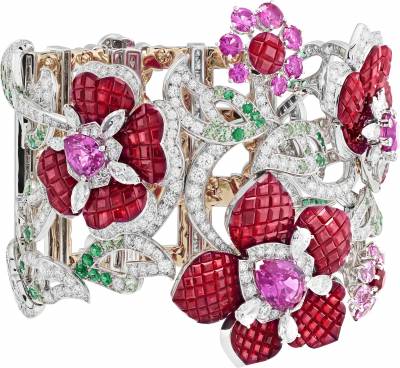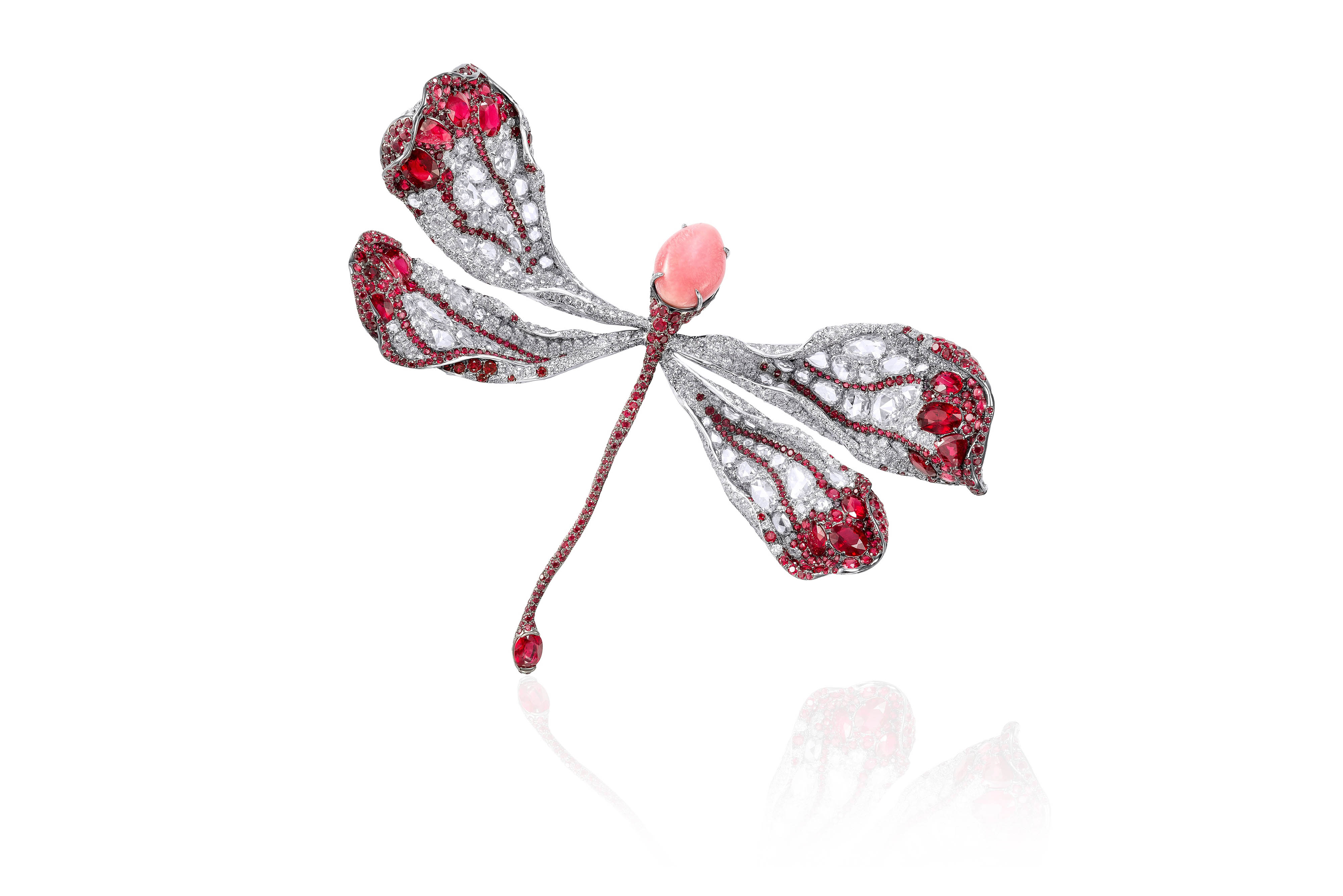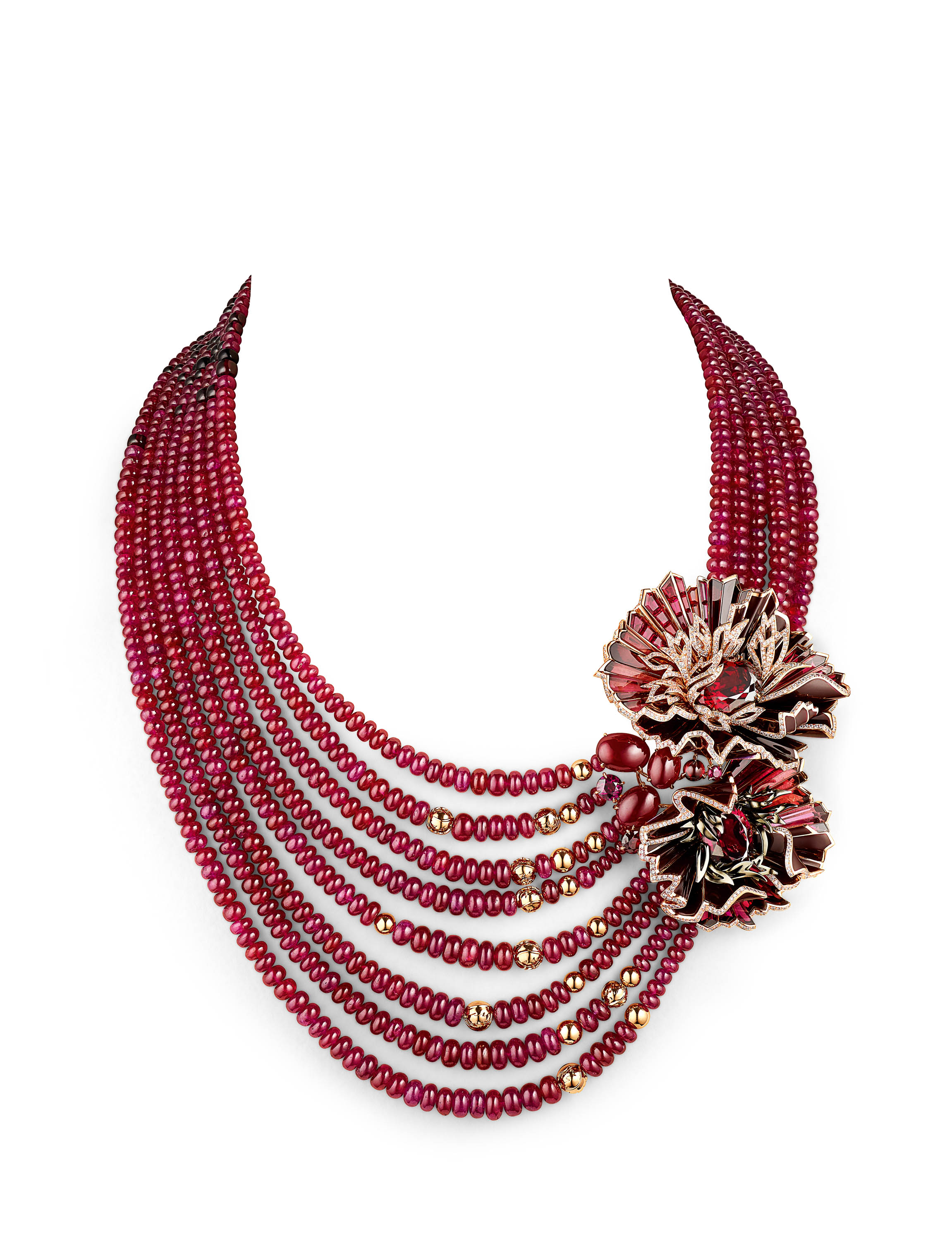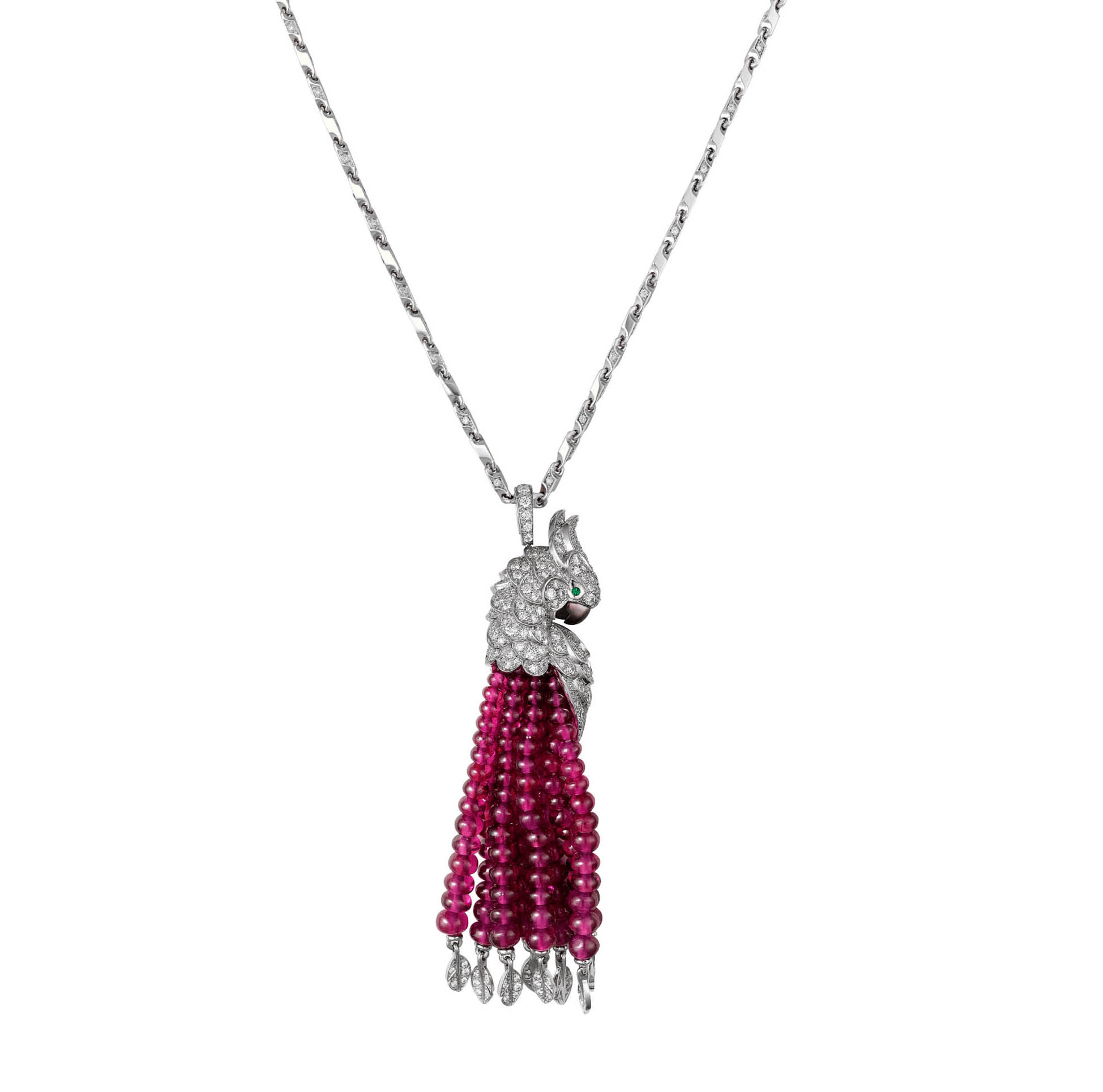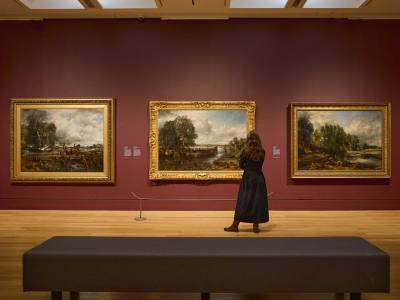To call rubies the new emeralds would do both gems a disservice. Both are highly prized, yet until now the focus of design has been on the green. Now the design emphasis is shifting towards the passionate and fiery shades of red. Other stones with reddish tones — spinel, rubellite and garnet — give a warm palette, but the intensity of a ruby, from pure red to vivid pink, and its ability to refract both pink and orange fire, make the ruby stand alone.
Rubies are also much rarer than either diamonds or emeralds and auction prices have risen tenfold in less than 40 years. “Rubies like sapphires and emeralds, have become extremely desirable in the past year,” says Alisa Moussaieff, managing director of Moussaieff.
Top jewellery houses have always created exquisite pieces using rubies, their intense colour set off by frames of white diamonds, or with emeralds and sapphires in the Indian-inspired tutti-frutti style pioneered by Cartier and Boucheron in the 1920s. Now, designers are using many more, as single or matched stones, pavé or beads, in combination with other coloured stones.
